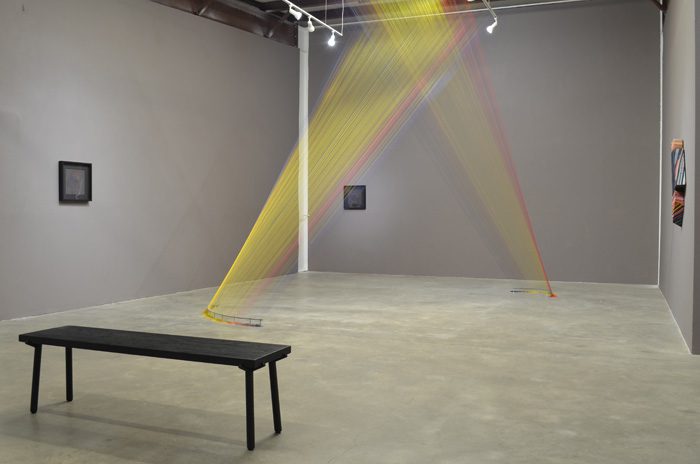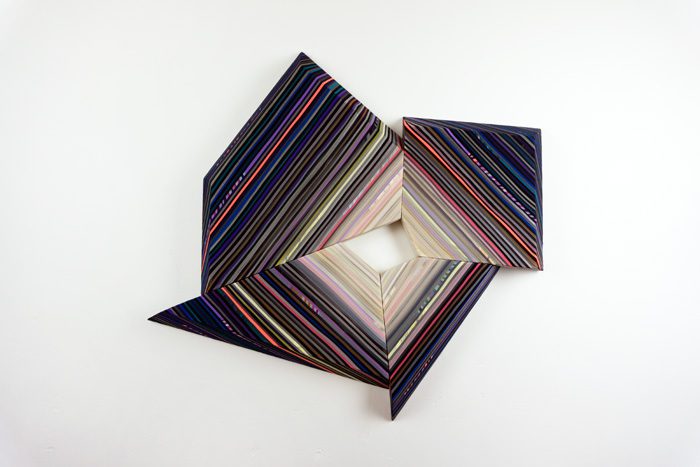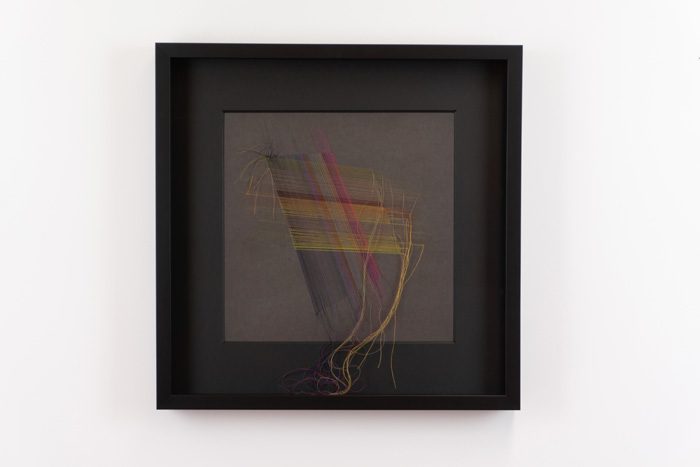New Mexico-based artist Jen Pack’s colorful fiber wall hangings bring the materiality of painting into question.

Albuquerque | jenpack.com | @jenpackart
represented by Kouri + Corrao Gallery, Santa Fe
“The nature of my work is one of integrating tensions,” says Albuquerque-based artist Jen Pack (백희숙), and this process of assimilation is readily apparent in (he)r wall-hanging artworks. (He)r shaped frames, which s(he) fabricates (he)rself, challenge the genre distinctions of painting and sculpture. Likewise, (he)r use of fabric in lieu of paint asks the viewer to reconsider the materiality of painting and, thus, the identity of a painter.
Productively harnessing the tensions between seemingly contradictory or disparate entities and ideas, though, is not confined to the products of (he)r artistic process. Pack notes, for instance, that (he)r bicultural identity places (he)r in an “in-between” space, necessitating that s(he) be “comfortable being uncomfortable.”
The artist recently adopted the written pronouns s(he) and (he)r “to honor my masculinity paired within my female presentation.” S(he) adds, “I play a lot with language in the titles of my artwork and in presenting myself.”
Tellingly, the artist recalls that one of (he)r earliest memories was “hearing yellow sing a song. Logic says it was the bees, but the hum was not the sound of bees. I felt and heard the color energy vibrating.” Indeed, this childhood recollection of synesthesia—or the conflation of sensory experiences—portends the concepts underlying (he)r then-future art practice and, perhaps, is emblematic of (he)r hybrid racial identity.

Pack’s investigation of tensions manifests itself in (he)r broader project, which s(he)’s named Soul Umbra. According to the artist, Soul Umbra is the materialization of icons “from a space unseen.” In other words, “they are precise projections of the soul’s intentions that verbal language cannot articulate the edges of, exteriorized into corporeal form… It exposes the permeable boundaries of perception and the porous relationship between truth, beauty, and identity. It maps liminal fields.” By concretely presenting what is materially absent, Pack creates an interstitial space that traffics between realms of the material and the ineffable, the expressible and the inexpressible.
“My mom told me once,” Pack says, “that I sew like a construction worker.” (He)r mother’s insight, then, encapsulates the overarching sentiment of (he)r person, (he)r process, and (he)r product: a bicultural artist/fabricator who conflates painting and sculpture, sews (he)r paintings, and developed a practice dedicated to the movement between this realm and the ethereal.





